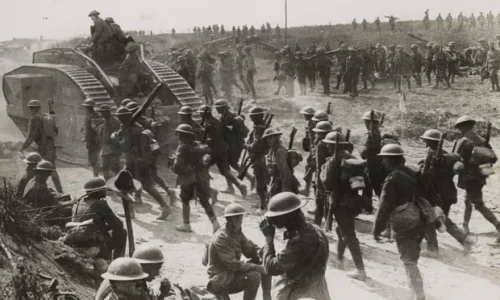The 27-ton tank (serial no. 2873) could be under the command of either 2nd Lt. Julian Cecil Lazonby or 2nd Lt. Thomas Henderson but on this tragic occasion it was commanded by Lt. Lazonby. B 57 was the crew number. ‘B’ was this battalion’s letter and tanks usually had their names, which began with the battalion letter, chosen by the commander. 2nd Lt. Henderson was the son of Mr. and Mrs. Thomas Henderson, land owners of Ardrum, Inniscarra, Co. Cork. Ardrum was a home of the Colthurst family, owners of the famous Blarney Castle so it is easy to see why the name Blarney Castle was chosen. It was armed with 5 Lewis machine guns plus 1 spare, making it a ‘female’ tank. A ‘male’ tank had 2 six-pounder guns plus 3 machine guns.





